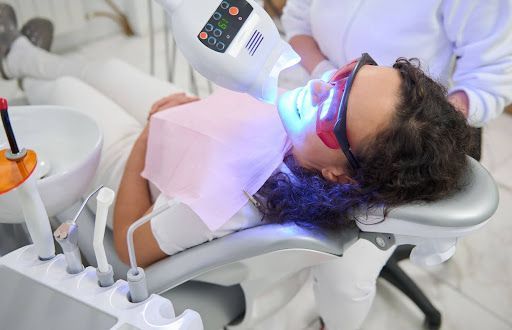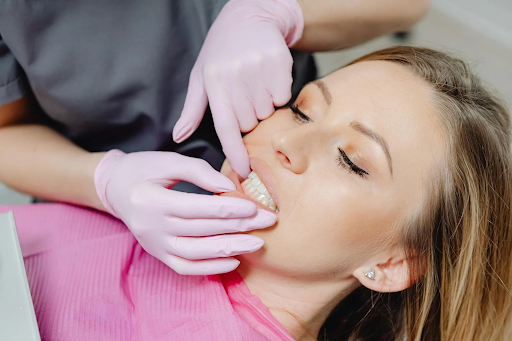Navigating Your Orthodontic Journey
The initial consultation is a pivotal moment in the orthodontic process. It's here, in the heart of Omaha, Fremont, or Elkhorn, where achieving a perfect smile begins. At McAllister Orthodontics, the consultation lays the groundwork for personalized treatment. It’s an opportunity for the patient to discuss their concerns and desires, and for the orthodontist to conduct a thorough evaluation of the patient's oral health.
During the first visit, patients can expect a warm welcome followed by a comprehensive oral examination, which may involve taking X-rays or dental impressions. This not only aids in identifying the current state of oral health but also flags potential future issues that comprehensive orthodontic treatment can address.
Pre-treatment assessments encompass a review of the patient's dental and medical history. These assessments form the basis for determining the most effective treatment approach, ensuring that the proposed plan accommodates the patient’s unique needs and lifestyle.
Mapping Out the Treatment Plan
After assessing the initial condition of the teeth and jaw, it's time to chart out a custom treatment plan that aligns with the patient's goals. McAllister Orthodontics focuses on crafting a roadmap that's tailored to each individual's case, whether it's correcting a bite issue or achieving a straighter smile.
Patient options range from traditional braces to Invisalign aligners, catering to a variety of preferences and conditions. The choice between these options will be influenced by factors such as the complexity of the dental issues, the anticipated duration of the treatment, and the patient's personal comfort.
Understanding treatment timelines is essential, as the duration of orthodontic treatment can vary widely from one individual to another. Patients are empowered with information on estimated timelines so they can plan their lives accordingly and commit to the process with a realistic timeframe in mind. An integral aspect of this commitment includes attending scheduled appointments and following the orthodontist's instructions.
Life with Orthodontic Appliances
Once the orthodontic appliance is in place, be it braces or Invisalign, adjusting to this new addition becomes a part of daily life. Patients will receive guidance on how to care for their appliances, an essential step in ensuring the effectiveness of the treatment and the health of their teeth and gums throughout the orthodontic journey.
McAllister Orthodontics provides comprehensive advice on routine care and maintenance of orthodontic appliances, emphasizing the importance of regular cleaning and check-ups. Patients are educated on the use of specialized tools and techniques to maintain optimal oral hygiene, even in hard-to-reach areas around brackets and wires.
Diet plays an important role in the care of orthodontic appliances. Patients are advised to avoid certain foods that could damage braces or impede the effectiveness of Invisalign. This includes steering clear of overly hard, sticky, or sugary foods that could compromise the integrity of the appliance or increase the risk of dental issues.
Finally, managing discomfort and common issues is part of the process. It's perfectly normal to experience some mild soreness after adjustments to braces or when switching to a new set of Invisalign trays. McAllister Orthodontics ensures that patients are well-informed on how to alleviate any discomfort and recognize when to seek additional care if they encounter any problems.
Tracking Progress and Adjustments
Orthodontic treatment is a dynamic process requiring periodic adjustments and close monitoring. Regular check-up appointments play a crucial role in this regard. During these visits, which are often scheduled every four to six weeks, the orthodontist assesses the movement of the teeth and makes necessary adjustments to wires or aligners. This ensures that the treatment remains on track towards the desired outcome.
The adjustments made during these visits are critical to the treatment's success. They are not only essential in guiding teeth to their correct position but also in managing any discomfort that might arise from shifting teeth. Moreover, advancements in technology now allow for digital monitoring of progress, giving both the patient and orthodontist a clear view of the treatment trajectory and any necessary alterations in real-time.
Preparing for the Big Reveal
The day when orthodontic appliances come off is a momentous one. Criteria must be met before removal, which includes the correct alignment of teeth and the resolution of bite issues. The anticipation for this day is palpable, with patients looking forward to seeing the results of their commitment to the treatment plan.
McAllister Orthodontics shares in this excitement and meticulously prepares for the big reveal. Ensuring that every shift and adjustment has resulted in the desired alignment, they work closely with patients to set realistic expectations and provide a clear vision of the post-treatment smile.
The Post-Braces Phase: Retention
Once braces are removed or the final Invisalign tray is used, the retention phase begins. The use of retainers is paramount in preserving the results of orthodontic treatment. Retainers help to maintain the position of the teeth until the gums and bones have adjusted to the new alignment.
Retainers are typically worn full-time immediately after the removal of braces, progressively transitioning to night-time wear. McAllister Orthodontics guides patients through this period, providing clear instructions on the maintenance and duration of retainer use to ensure long-term stability of the treatment results.
Why McAllister Orthodontics is a Trusted Partner
Choosing the right partner for an orthodontic journey is pivotal. McAllister Orthodontics supports patients throughout the treatment process with a commitment to excellence and personalized care. From the initial consultation to the final appointment, they are steadfast in providing assistance and answering any questions that may arise.
Patient education is a cornerstone of their approach, ensuring that their patients are well-informed about each step of treatment, the care required for orthodontic appliances, and the importance of retention. They are also mindful of the financial aspect of orthodontic care by offering various financing options that accommodate patients' budgets, exemplifying their dedication to patient satisfaction.
Beyond Treatment: Embracing Your New Smile
The completion of orthodontic treatment often brings about profound psychological benefits. A straightened smile can bolster an individual's self-confidence and positively affect their social interactions and professional opportunities.
Residents of Omaha, Fremont, and Elkhorn can attest to the impact that a confident smile has on daily life. McAllister Orthodontics takes pride in being a part of such a transformative experience, understanding that the effect extends well beyond aesthetics. A smile transformation with their professional guidance can indeed change lives, providing a long-lasting reason for patients to smile proudly.
Starting your quest for a perfect smile? McAllister Orthodontics is here to support you throughout the entire process, from the initial consultation to the joyous moment of revealing your new smile and beyond. Visit our
Contact Us page to schedule your appointment today and uncover the numerous ways we can support and transform your orthodontic experience in Omaha, Fremont, and Elkhorn.












